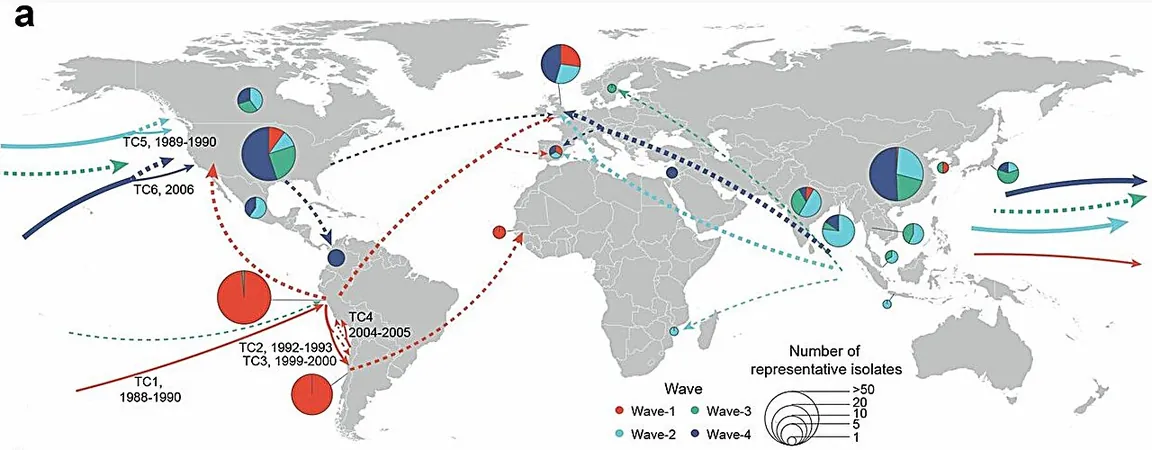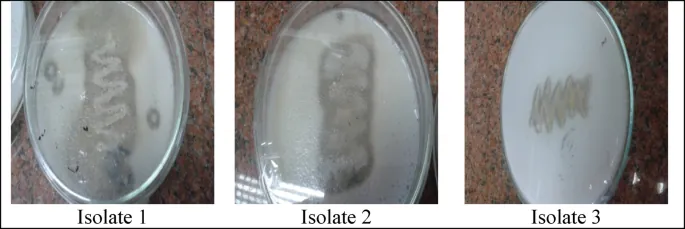
Urgent Call to Improve Monitoring of Vital Juvenile Fish Habitats
2025-09-01
Author: Olivia
Unraveling the Mystery of Juvenile Fish Habitats
The health of fish populations hinges on the quality of their habitats, especially for juveniles where they spawn, feed, and grow. As coastal development, climate change, and pollution intensify, these critical habitats are under siege, raising alarms for sustainable fisheries management.
The Quest for Better Monitoring Tools
With the urgent need for improved understanding of juvenile and adult fish habitats, scientists are advocating for innovative ways to assess what makes these environments thrive. However, accurately measuring habitat quality isn't straightforward and presents a variety of challenges.
A Groundbreaking Review Sheds Light on Habitat Measurement
A dedicated group from the International Council for the Exploration of the Sea (ICES), including Dr. Benjamin Ciotti from the University of Plymouth, conducted a thorough review of nearly 900 studies spanning 50 years. Their goal? To dissect current methods of assessing juvenile habitat quality for fish, crustaceans, and mollusks.
The Metrics That Matter - Or Lack Thereof
Published in *Biological Reviews*, their findings reveal a concerning trend: a staggering 85% of studies focused solely on juvenile abundance, using methods like net surveys or diving counts. While this indicates habitat use, it fails to show whether these fish are truly thriving in those spaces.
A Call for Comprehensive Research
The team urged a shift in focus towards understanding growth and survival rates in juvenile fish. Alarmingly, only 16% of studies included juvenile survival metrics, with a mere 10% linking juvenile habitats to adult fish populations—widely regarded as the gold standard for assessing habitat quality.
Bridging the Gap Between Science and Policy
This narrow research focus has led to significant gaps in evidence, creating a disconnect between scientific findings and policy-making. Decisions are often based on incomplete data, hindering effective management.
Dr. Ciotti elaborated, "We need more complete information about coastal habitats' role in supporting juvenile fish to provide the solid foundation for sustainable fisheries conservation."
New Directions for Future Habitat Science
WGVHES emphasizes the necessity of moving past basic abundance measures. They advocate for comprehensive metrics that evaluate survival, growth, and contribution to adult stocks, as these will more accurately portray habitat quality.
The authors also stress the need for studies that span different seasons and tidal cycles to capture habitat use dynamics.
Harnessing the Power of Technology
To enhance habitat assessments, the review suggests combining various indicators and leveraging cutting-edge technologies like tagging and telemetry. These tools can bridge critical data gaps and provide deeper insights.
Understanding Fish Developmental Changes
Monitoring developmental changes in juvenile fish is crucial as they often migrate to different habitats as they grow. This comprehensive approach lays a robust foundation for identifying essential fish habitats and calls for a new wave of research and monitoring.
Dr. Ciotti asserts, "In our technology-rich age, insights from molecular techniques and electronic tags can transform our understanding. No single method offers all the answers; it's the combination of diverse approaches that will illuminate the vital role of coastal habitats in supporting fish recruitment."









 Brasil (PT)
Brasil (PT)
 Canada (EN)
Canada (EN)
 Chile (ES)
Chile (ES)
 Česko (CS)
Česko (CS)
 대한민국 (KO)
대한민국 (KO)
 España (ES)
España (ES)
 France (FR)
France (FR)
 Hong Kong (EN)
Hong Kong (EN)
 Italia (IT)
Italia (IT)
 日本 (JA)
日本 (JA)
 Magyarország (HU)
Magyarország (HU)
 Norge (NO)
Norge (NO)
 Polska (PL)
Polska (PL)
 Schweiz (DE)
Schweiz (DE)
 Singapore (EN)
Singapore (EN)
 Sverige (SV)
Sverige (SV)
 Suomi (FI)
Suomi (FI)
 Türkiye (TR)
Türkiye (TR)
 الإمارات العربية المتحدة (AR)
الإمارات العربية المتحدة (AR)